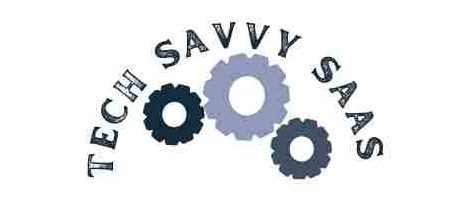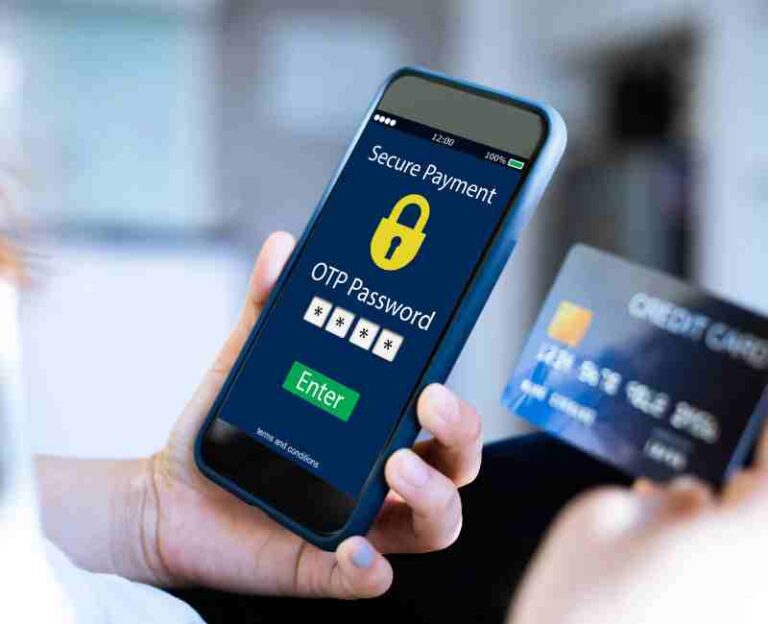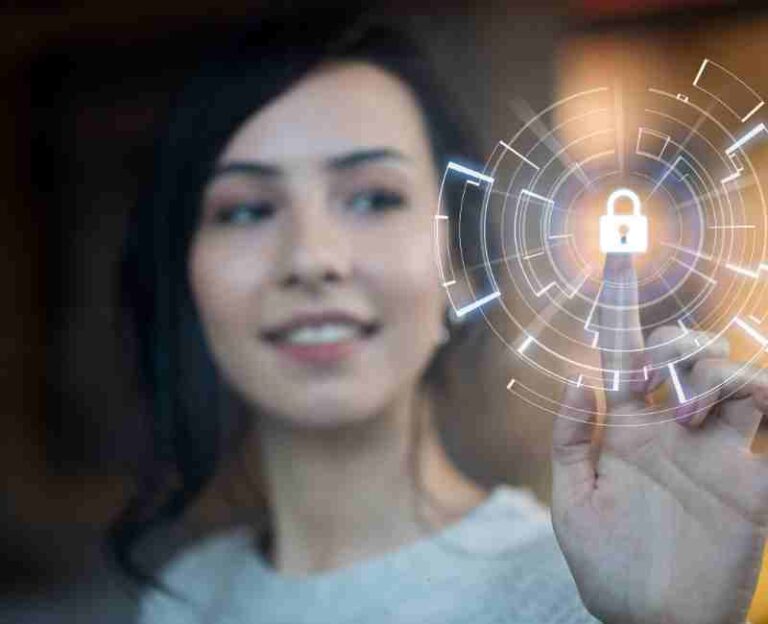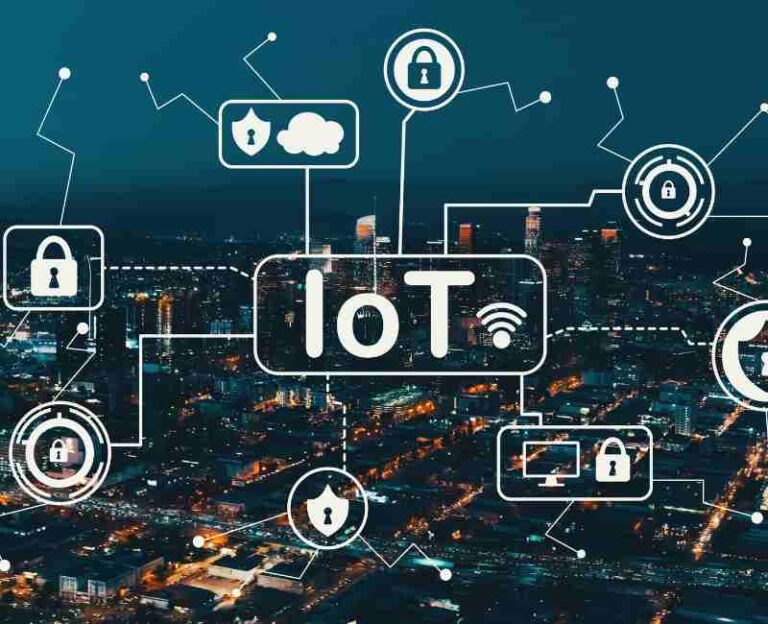The landscape of work has undergone a revolutionary transformation in recent years, especially with the dramatic rise in remote work. This shift, largely propelled by global events such as the pandemic, has not only changed where we work but also how we must think about cybersecurity. The boundaries of office and home have blurred, leading to a significant change in how security risks are perceived and managed.
As more employees transition to working outside the traditional office environment, the need for robust cybersecurity tips becomes increasingly crucial. Remote work opens up a variety of security challenges, ranging from unsecured home networks to the risk of data breaches through personal devices. With remote employees accessing company resources from various locations, the attack surface for potential cyber threats widens, making it paramount for organizations and individuals to reinforce their cybersecurity measures.
In this scenario, the approach adopted by Morgan Stanley stands as a commendable example. Renowned for its keen insight into risk management and cybersecurity, Morgan Stanley has developed a comprehensive strategy to safeguard its remote workforce. This strategy is not just about deploying advanced technological solutions; it also encompasses fostering a culture of security awareness among its employees. Morgan Stanley’s approach underscores the belief that a strong defense against cyber threats involves both cutting-edge technology and informed, vigilant employees.

Risks and Threats
The transition to remote work has brought with it a unique set of cybersecurity risks that both organizations and individual workers need to be acutely aware of. When employees work from outside the traditional office environment, they often connect to corporate networks via various, sometimes unsecured, internet connections. This shift has given rise to an increased incidence of cyber threats, including phishing scams, malware attacks, and data breaches.
Phishing scams, in particular, have become more sophisticated. Cybercriminals now often tailor their attacks to exploit the remote work setup, where employees might not have immediate access to IT support or could be more relaxed about security protocols. Similarly, malware attacks have evolved, with attackers leveraging vulnerabilities in less secure home networks or personal devices used for work purposes.
The pandemic has further accelerated these security risks. With many organizations hastily transitioning to remote work, necessary security measures might not have been fully implemented or communicated, leaving significant gaps in defense. This rapid shift has made it easier for cybercriminals to exploit vulnerabilities, leading to an increased risk of data breaches.
The Role of Personal Devices and Home Networks
One of the key vulnerabilities in remote work comes from the use of personal devices and home networks. Often, these devices and networks lack the robust security measures that are standard in office environments. Personal devices may not be regularly updated with the latest security patches, making them more susceptible to malware and other cyber threats. Additionally, the use of these devices for both personal and work purposes can lead to inadvertent security lapses, such as downloading unsecured applications or accessing dubious websites.
The security of home networks is another critical concern. Unlike corporate networks, which are typically fortified with advanced security protocols and hardware, home networks are more likely to be less secure. This lack of security can be attributed to weaker router passwords, outdated firmware, or the absence of network encryption. As a result, these networks become prime targets for bad actors looking to intercept sensitive data or launch cyberattacks.
It’s crucial for remote workers to understand the importance of securing their home routers and personal computers. Simple steps such as changing default router passwords, regularly updating router firmware, and ensuring network encryption can significantly enhance the security of home networks. Likewise, maintaining the security of personal devices through regular updates, the use of reputable antivirus software, and being vigilant about the sources of downloaded files are essential practices in mitigating the risk of cyber attacks.
Best Practices for Secure Remote Work
In the era of widespread remote work, establishing and following best practices for cybersecurity is not just a recommendation; it’s a necessity. One of the critical areas where this applies is in the realm of device security. As remote workers, we use a variety of devices to access work-related information, from laptops and smartphones to personal tablets. Ensuring the security of these devices is paramount to safeguarding sensitive data and maintaining a secure remote work environment.
Device Security
The first step in device security is understanding the importance of securing both work devices and personal devices used for remote work. It’s a common misconception that personal devices aren’t as susceptible to security threats as work devices. However, when personal devices are used for work tasks, they become just as critical to secure. These devices can be gateways for cybercriminals to access company networks and sensitive information.
One effective way to protect devices is through the use of antivirus software and anti-malware software. This software acts as the first line of defense against malicious programs that can infect your device. These programs scan your device for known threats, block unauthorized access, and alert you to potential security risks. It’s crucial to keep this software updated to ensure protection against the latest threats, as cybercriminals continuously evolve their methods.
Another key aspect of device security is the implementation of strong passwords and the use of a password manager. Strong passwords are your digital keys’ first and most fundamental line of defense against unauthorized access. They should be complex, unique for every account, and changed regularly. However, managing a multitude of strong passwords can be challenging, which is where password managers come into play. These tools store your passwords in a secure, encrypted format and help generate strong passwords, ensuring that you don’t have to remember every single one.
Additionally, cyber hygiene practices such as locking devices when not in use, being cautious about the links and attachments you open, and regularly updating your operating system and applications are essential. These updates often include patches for security vulnerabilities that have been discovered since the last version, making them critical to protecting your device from new threats.
Network Security
When working remotely, ensuring the security of your internet connection is of paramount importance. This falls under the domain of network security, a critical aspect that encompasses safeguarding the channels through which remote employees access the internet and connect to their workplace networks. This section will delve into the key components of network security, highlighting the role of virtual private networks (VPNs), best practices for securing home networks, and the necessity of multi-factor authentication (2FA).
The Role of VPNs in Securing Remote Employees’ Internet Access
A cornerstone of remote work cybersecurity is the use of virtual private networks (VPNs). VPNs create a secure and encrypted connection between a user’s device and the internet or a company’s network. This encrypted tunnel shields data from prying eyes, making it significantly more challenging for cybercriminals to intercept sensitive information. Remote employees often connect to public Wi-Fi networks, which can be a breeding ground for potential security threats. By utilizing a VPN, employees can establish a secure connection, mitigating the risks associated with unsecured networks.
Moreover, VPNs play a crucial role in safeguarding the confidentiality and integrity of data during its transit over the internet. This becomes particularly important when accessing company resources or communicating sensitive information. The adoption of VPNs reflects a proactive approach to network security, ensuring that remote employees can work confidently without compromising data security.
Best Practices for Securing Home Networks
Securing home networks is equally vital to maintaining overall network security. Remote workers often use their home networks to connect to company servers or cloud-based services. Employing best practices for securing home networks is essential to preventing unauthorized access and protecting sensitive data.
One key recommendation is the use of the latest security protocols for home routers, such as WPA2 or WPA3. These protocols enhance the encryption of data transmitted over the Wi-Fi network, making it significantly more challenging for attackers to intercept or manipulate the data. It’s essential to ensure that router firmware is regularly updated to patch any potential security vulnerabilities.
Another consideration is the use of strong and unique passwords for home Wi-Fi networks. This helps prevent unauthorized access to the network and reduces the risk of unauthorized users exploiting security flaws in routers or other connected devices.
The Necessity of Multi-Factor Authentication (2FA) for Enhancing Security
In addition to utilizing VPNs and securing home networks, implementing multi-factor authentication (2FA) is a powerful strategy for enhancing overall network security. 2FA adds an extra layer of protection beyond just a username and password. This additional layer typically involves a temporary code sent to a registered device, adding an element of verification that goes beyond simple credentials.
The significance of 2FA lies in its ability to thwart unauthorized access, even if login credentials are compromised. Even if a malicious actor obtains a password, they would still require the second factor—often a code generated on a mobile device or sent via email—to gain access. This significantly reduces the likelihood of unauthorized access, adding a robust layer of defense against cyber threats.
- More Post: How do you create strong and secure passwords?
- More Post: Understanding the Role of Firewalls in Network Security
Email Security
In the realm of remote work, where digital communication plays a pivotal role, securing email communications becomes critical. Email security is not just about protecting against spam; it’s about safeguarding against more sophisticated threats like phishing scams and smishing attacks. This section outlines strategies for identifying and avoiding these threats, along with the crucial role of cybersecurity training in recognizing potential phishers.
Strategies to Identify and Avoid Phishing Scams and Smishing Attacks:
-
- Email Verification: Always verify the sender’s email address, especially if the email contains suspicious links or requests sensitive information.
- Check URLs: Hover over hyperlinks to preview the actual URL before clicking. Avoid clicking on links in unexpected or unsolicited emails.
- Email Content Analysis: Scrutinize the content for irregularities, including misspellings, grammatical errors, or unusual requests.
- Beware of Urgency: Phishers often create a sense of urgency. Be cautious when emails pressure you to take immediate action.
- Use Security Software: Employ security software that includes anti-phishing features to automatically detect and block malicious emails.
- Report Suspicious Emails: If in doubt, report suspicious emails to your IT department or security team.
Emphasizing the Importance of Cybersecurity Training in Recognizing Phishers:
-
- Regular Training Sessions: Engage in regular cybersecurity training sessions to educate remote workers on the latest phishing techniques.
- Simulated Phishing Exercises: Conduct simulated phishing exercises to test employees’ ability to recognize phishing attempts and provide immediate feedback.
- Interactive Training Modules: Utilize interactive training modules that cover various aspects of email security, including recognizing phishing emails and understanding the risks.
- Case Studies: Share real-world case studies to illustrate the consequences of falling victim to phishing scams, emphasizing the impact on both individuals and organizations.
- Encourage Vigilance: Instill a culture of vigilance, encouraging employees to question the legitimacy of unexpected emails and verify with colleagues or IT if unsure.
- Reward Systems: Implement a reward system for employees who consistently demonstrate good cybersecurity practices, reinforcing positive behavior.
Training and awareness
Beyond email security, the broader category of training and awareness is pivotal in building a resilient remote workforce. Morgan Stanley’s approach to cybersecurity training sets a notable example, emphasizing the importance of creating awareness of cyber threats and instilling best practices.
Morgan Stanley’s Approach to Cybersecurity Training for Its Remote Workforce:
-
- Comprehensive Training Programs: Develop comprehensive training programs covering various aspects of cybersecurity, tailored to the remote work environment.
- Accessible Resources: Provide easily accessible resources, such as online courses, webinars, and documentation, to accommodate diverse learning preferences.
- Scenario-Based Training: Incorporate scenario-based training to simulate real-world cyber threats and enable employees to apply their knowledge in practical situations.
- Continuous Learning: Foster a culture of continuous learning by regularly updating training content to address evolving cyber threats.
- Feedback Mechanisms: Establish feedback mechanisms for employees to share their experiences and concerns, facilitating continuous improvement in training programs.
Creating Awareness of Cyber Threats, Including Zero-Day Attacks and Cybersecurity Best Practices:
-
- Communication Channels: Utilize various communication channels, including internal newsletters, emails, and collaboration platforms, to disseminate information about emerging cyber threats.
- Zero-Day Attack Awareness: Educate employees about zero-day attacks, emphasizing the importance of promptly installing software updates and patches to mitigate vulnerabilities.
- Regular Awareness Campaigns: Conduct regular awareness campaigns focusing on cybersecurity best practices, covering topics such as password management, secure file sharing, and device security.
- Collaborative Workshops: Organize collaborative workshops where employees can share insights and experiences related to cybersecurity, fostering a sense of community awareness.
- Employee Feedback Sessions: Schedule regular feedback sessions to gather input from employees about the effectiveness of training and awareness initiatives, allowing for continuous refinement.
Data Management
Effective data management is pivotal in ensuring the security and integrity of sensitive information handled by remote workers. This encompasses secure handling and encryption of data, along with robust risk management strategies to prevent data breaches and safeguard personal and corporate data.
Secure Handling and Encryption of Sensitive Data by Remote Workers:
-
- Data Encryption: Implement strong encryption protocols for all sensitive data, ensuring that data remains secure during transmission and storage.
- Access Control: Enforce strict access control measures, ensuring that only authorized personnel have access to sensitive data.
- Regular Data Backups: Conduct regular data backups to secure servers, minimizing data loss in case of a breach or technical failure.
- Secure File Sharing: Utilize secure file sharing platforms that offer end-to-end encryption to share sensitive documents.
- Data Classification: Implement data classification policies to categorize data based on sensitivity and apply appropriate security measures accordingly.
Risk Management Strategies to Prevent Data Breaches and Protect Personal Data:
-
- Regular Risk Assessments: Conduct regular risk assessments to identify potential vulnerabilities and implement measures to mitigate them.
- Incident Response Plan: Develop and maintain a comprehensive incident response plan to address potential data breaches swiftly and effectively.
- Employee Training: Provide ongoing training to remote workers on data management best practices and how to recognize potential security threats.
- Monitoring and Auditing: Implement continuous monitoring and auditing processes to detect unusual activities that could indicate a breach.
- Policy Compliance: Ensure strict compliance with data protection policies and regulations to safeguard personal and corporate data.
Collaboration Tools and Security
In today’s remote work environment, collaboration tools have become indispensable. However, the security of these tools is crucial to protecting sensitive business communications and maintaining a first-class business environment. This section outlines the security measures for collaboration tools and the importance of access controls and security features.
Security Measures for Collaboration Tools Used in Remote Work Settings:
-
- End-to-End Encryption: Use collaboration tools that offer end-to-end encryption for all communications, including chats, video calls, and file sharing.
- Regular Software Updates: Ensure all collaboration tools are regularly updated to patch any security vulnerabilities.
- Secure Authentication: Implement secure authentication methods, such as multi-factor authentication, to access collaboration tools.
- Customizable Privacy Settings: Use tools that offer customizable privacy settings, allowing teams to tailor security based on the sensitivity of the information.
- Anti-Malware Protection: Ensure that collaboration tools are protected against malware attacks and other cyber threats.
Access Controls and Security Features to Protect Sensitive Business Communications:
-
- Role-Based Access Controls: Implement role-based access controls (RBAC) to ensure employees have access only to the information necessary for their role.
- Audit Trails: Use tools that provide audit trails, recording who accessed what information and when, to monitor for any unauthorized access.
- Data Loss Prevention: Apply data loss prevention (DLP) measures to monitor and control data being shared via collaboration tools to prevent accidental or malicious data breaches.
- Secure Communication Channels: Utilize secure communication channels within these tools, especially for discussions involving sensitive or proprietary information.
- User Training and Guidelines: Provide comprehensive training and clear guidelines on the secure use of collaboration tools, emphasizing the importance of maintaining operational security in a remote environment.
Key Takeaways
This section provides a concise recap of the essential cybersecurity tips for remote workers, underscoring the core values of maintaining robust cybersecurity in a first-class way. It also emphasizes the crucial role of staying updated with evolving cyber hygiene practices.
Critical Cybersecurity Tips for Remote Workers:
-
- Utilize Strong Passwords: Implement and regularly update strong, unique passwords, supplementing them with password managers for enhanced security.
- Employ Multi-Factor Authentication: Use multi-factor authentication (2FA) wherever possible to add an extra layer of security.
- Regular Software Updates: Keep all devices and software updated to patch security flaws and reduce the risk of malware attacks.
- Secure Home Networks: Protect home networks by using strong Wi-Fi encryption like WPA2 or WPA3 and changing default router passwords.
- Be Wary of Phishing Scams: Stay alert to phishing attempts by verifying email sources and avoiding clicking on suspicious links.
- Data Encryption and Backup: Encrypt sensitive data and ensure regular backups to prevent data loss in case of a breach.
Maintaining Cybersecurity in a First-Class Way:
-
- Adopt a Proactive Approach: Always be proactive in addressing potential security risks, anticipating and mitigating threats before they become problems.
- Continuous Learning and Adaptation: Stay informed about the latest cybersecurity trends and threats, adapting practices to meet evolving challenges.
- Collaboration and Communication: Encourage open communication and collaboration within teams to share insights and strategies for effective cybersecurity.
Importance of Continuous Updates in Cyber Hygiene Practices:
-
- Ongoing Education: Engage in regular training and educational programs to stay updated on the best cybersecurity practices and emerging threats.
- Evolving Security Measures: Adapt to the changing landscape of cyber threats by continuously updating security measures and protocols.
- Personal Accountability: Foster a culture where each individual is accountable for their part in maintaining cybersecurity, recognizing that everyone plays a crucial role.
FAQ
This section addresses common questions regarding the security concerns of remote workers. It provides practical tips and explanations to enhance security measures, covering topics such as securing home networks and the critical importance of multi-factor authentication in remote work security.
How can remote workers enhance the security of their home network?
-
- Use Strong Encryption: Secure Wi-Fi networks with strong encryption protocols like WPA3 to protect against unauthorized access.
- Change Default Credentials: Modify default router usernames and passwords to prevent easy access for potential attackers.
- Enable Network Encryption: Activate network encryption to ensure that data transmitted over the network is secure and protected from eavesdropping.
- Patch Security Vulnerabilities: Regularly update router firmware to patch any security vulnerabilities and ensure that the latest security features are in place.
- Frequent Software Updates: Keep all connected devices updated with the latest software patches to address potential vulnerabilities and enhance overall network security.
- Automate Update Processes: Explore options to automate firmware and software updates to minimize the risk of overlooking critical security updates.
Why is multi-factor authentication critical for remote work security?
-
- Additional Layer of Security: Multi-factor authentication (MFA) provides an extra layer of security beyond traditional username and password combinations.
- Mitigation of Credential Theft: Reduces the risk of unauthorized access in the event of stolen or compromised login credentials.
- Enhanced Identity Verification: Requires users to provide multiple forms of identification, adding complexity for potential attackers attempting unauthorized access.
Implementation of Multi-Factor Authentication in Securing Remote Access:
-
- Types of Authentication Factors: Explain the different types of authentication factors, such as something you know (password), something you have (token or device), and something you are (biometrics).
- Secure Access to Systems and Applications: Describe how 2FA ensures secure access to systems, applications, and sensitive data by requiring multiple forms of authentication.
- Compatibility with Various Platforms: Highlight that multi-factor authentication can be implemented across various platforms, including email accounts, VPNs, and company applications.
Role of 2FA in Protecting Against Unauthorized Access to Sensitive Data:
-
- Protecting Sensitive Information: Emphasize that 2FA plays a crucial role in protecting sensitive data, ensuring that even if login credentials are compromised, unauthorized access is significantly more challenging.
- Compliance with Security Standards: Many regulatory standards and frameworks recommend or require the use of multi-factor authentication to enhance security measures and protect sensitive information.
- User-Friendly Solutions: Showcase user-friendly aspects of 2FA, such as mobile app authenticators or hardware tokens, making it a convenient and effective security measure for remote workers.
What are common indicators of phishing emails?
In this section, we delve into the common signs of phishing scams and highlight the significance of cybersecurity awareness in recognizing these threats. Additionally, we provide practical steps for verifying the authenticity of emails and links, empowering remote workers to stay vigilant against potential phishing attacks.
Identifying Signs of Phishing Scams:
-
- Unexpected Sender: Be wary of emails from unexpected or unknown senders, especially those urging urgent action.
- Unusual Requests: Phishing emails often contain unusual requests for sensitive information or immediate financial transactions.
- Generic Greetings: Phishers may use generic greetings instead of addressing you by name, indicating a lack of personalized communication.
- Misspellings and Grammatical Errors: Phishing emails frequently contain spelling and grammatical mistakes, reflecting their illegitimate nature.
- Suspicious Links and Attachments: Exercise caution with links or attachments, particularly from unverified sources, as they may lead to malicious websites or malware.
Cybersecurity Awareness:
-
- Educational Programs: Participate in cybersecurity awareness programs to stay informed about the latest phishing techniques and tactics.
- Regular Training: Engage in regular training sessions to enhance the ability to recognize and avoid falling victim to phishing attempts.
- Stay Informed: Keep abreast of cybersecurity news and updates to understand emerging threats and trends in phishing attacks.
Steps to Verify the Authenticity of Emails and Links:
-
- Check the sender’s email address: Verify the sender’s email address to ensure it matches the legitimate domain of the supposed sender.
- Inspect URLs: hover over links to preview the destination URL before clicking. Ensure it begins with “https://” for secure connections.
- Verify Email Content: Cross-check email content for consistency with the sender’s usual communication style and language.
- Contact the Sender Directly: When in doubt, reach out to the supposed sender through a known, reliable contact method to confirm the legitimacy of the email.
- Use Email Security Features: Leverage email security features and filters provided by your email service provider to automatically detect and filter out phishing attempts.
- More Post: Common Cybersecurity Threats and How to Mitigate Them
- More Post: The Importance of Cybersecurity in the Digital Age
Conclusion
This concluding section summarizes the overarching importance of cybersecurity for the remote workforce, aligning with Morgan Stanley’s commitment to secure and responsible remote work practices.
-
- Reiterating the vital role of cybersecurity in safeguarding both personal and business data in a remote work environment.
- Underscoring the continuous efforts needed to counter evolving cyber threats and maintain a secure digital workspace.
Encouraging Adoption of Best Practices:
-
- Encouraging remote workers to adopt and adhere to the best cybersecurity practices as outlined in the preceding sections.
- Reinforcing the idea that cybersecurity is a collective responsibility and everyone plays a role in maintaining a secure work environment.
Acknowledging the Critical Role of Cybersecurity:
-
- Acknowledging the pivotal role of cybersecurity in achieving financial goals and preserving the integrity of personal and business data.
- Recognizing that a robust cybersecurity posture is not only a protective measure but also a strategic enabler for the success and sustainability of remote work initiatives.
In conclusion, the commitment to cybersecurity is not just a corporate responsibility but a shared commitment that empowers individuals and organizations to navigate the digital landscape securely. Morgan Stanley’s dedication to secure remote work serves as an inspiration, emphasizing the need for a collective effort to fortify our defenses against cyber threats.






